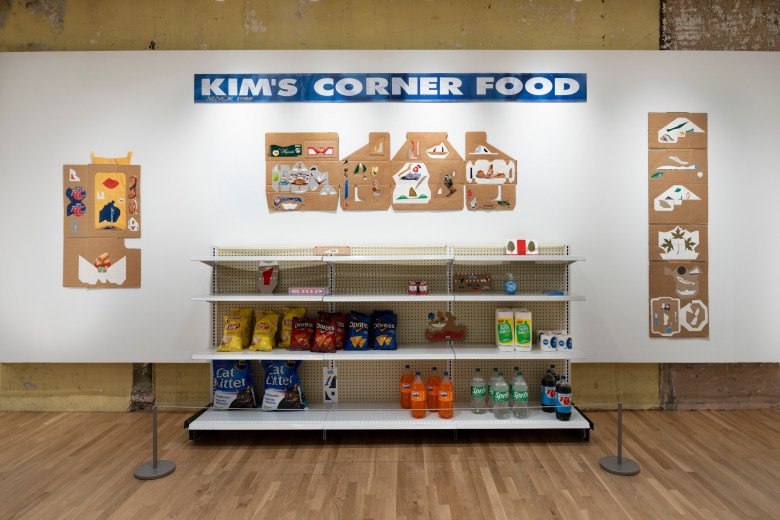For decades, self-taught immigrant artists in Chicago have collected, sculpted, woven, painted, built, and sustained a creative practice in their everyday lives. “Catalyst: Im/migration and Self-Taught Art in Chicago” at the Intuit Art Museum is a celebration of these works made since the 1940s.
Many of the working-class artists on view used tools from their trade. Stanislaw “Stanley” Szwarc used metal from dental equipment. Marion Perkins sculpted figures with baling wire from bundled newspapers at his newsstand. The troubled faces from his Skywatcher series—made in response to the Hiroshima bombing—were carved from the stone of abandoned buildings. Shopkeeper Aldobrando “Aldo” Piacenza filled his yard with small Italian cathedrals he built for birds.
Themes of activism and social justice come alive in “Catalyst.” Alfonso “Piloto” Nieves Ruiz repurposed trash in his haunting portrayal of the Statue of Liberty. Carlos Barberena’s relief prints center the dignity of undocumented laborers and how the U.S. exploits them.
“Catalyst” also highlights the role of community art centers in championing self-taught artists. Works from two Arts of Life members, a studio that supports artists with disabilities, are featured: Stefan Harhaj’s colorful skyscrapers and Isamu Guy Conners’s peaceful painting of North Avenue Beach.

Credit: Lisa and Nick Albertson
Whispered notes are cradled in crocheted fibers of Pooja Pittie’s Be in Softness, the vessels honoring stories she carries as an immigrant. María Enríquez de Allen made glossy, glittering wreaths of artificial flowers for Día de los Muertos altars; their hues an ever-blooming prayer.
Thomas Kong, a prolific collage artist, transformed his store, Kim’s Corner Foods, into a studio. He cut food packaging and rearranged it onto cardboard, often including his mantra: “Be Happy.”
With whatever materials they had around them, these artists bore witness to their experiences as immigrants. The heartaches and injustices are traced with purpose, dedication, and love, humming with the joy of creating, of the miracle of making new.
“Catalyst: Im/migration and Self-Taught Art in Chicago”
Through 1/11/26: Wed–Sun 11 AM–6 PM, third Thu 11 AM–8 PM, Intuit Art Museum, 756 N. Milwaukee, art.org/exhibitions/catalyst, adults $15, free for members, youth under 24, and visitors with disabilities






